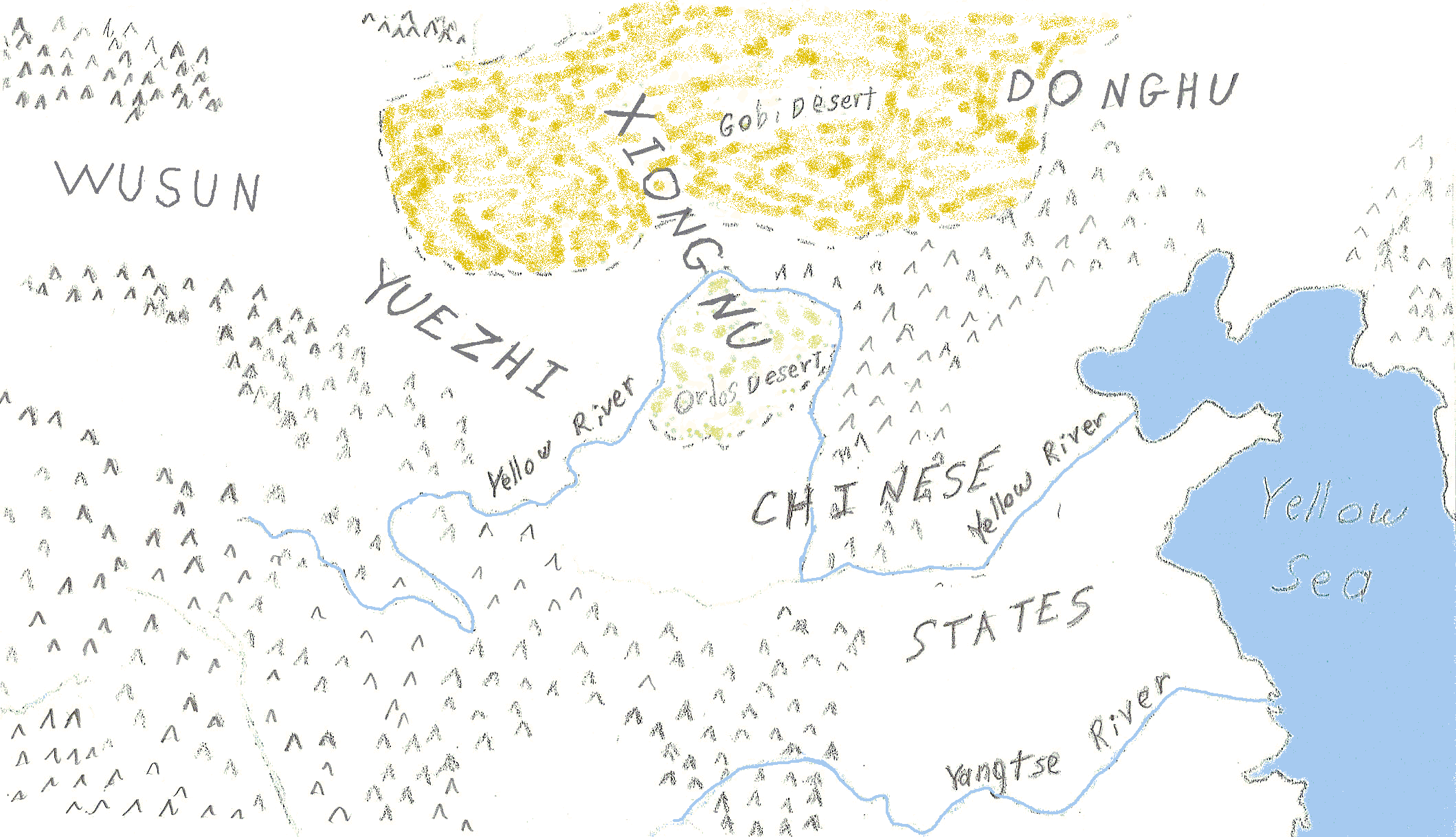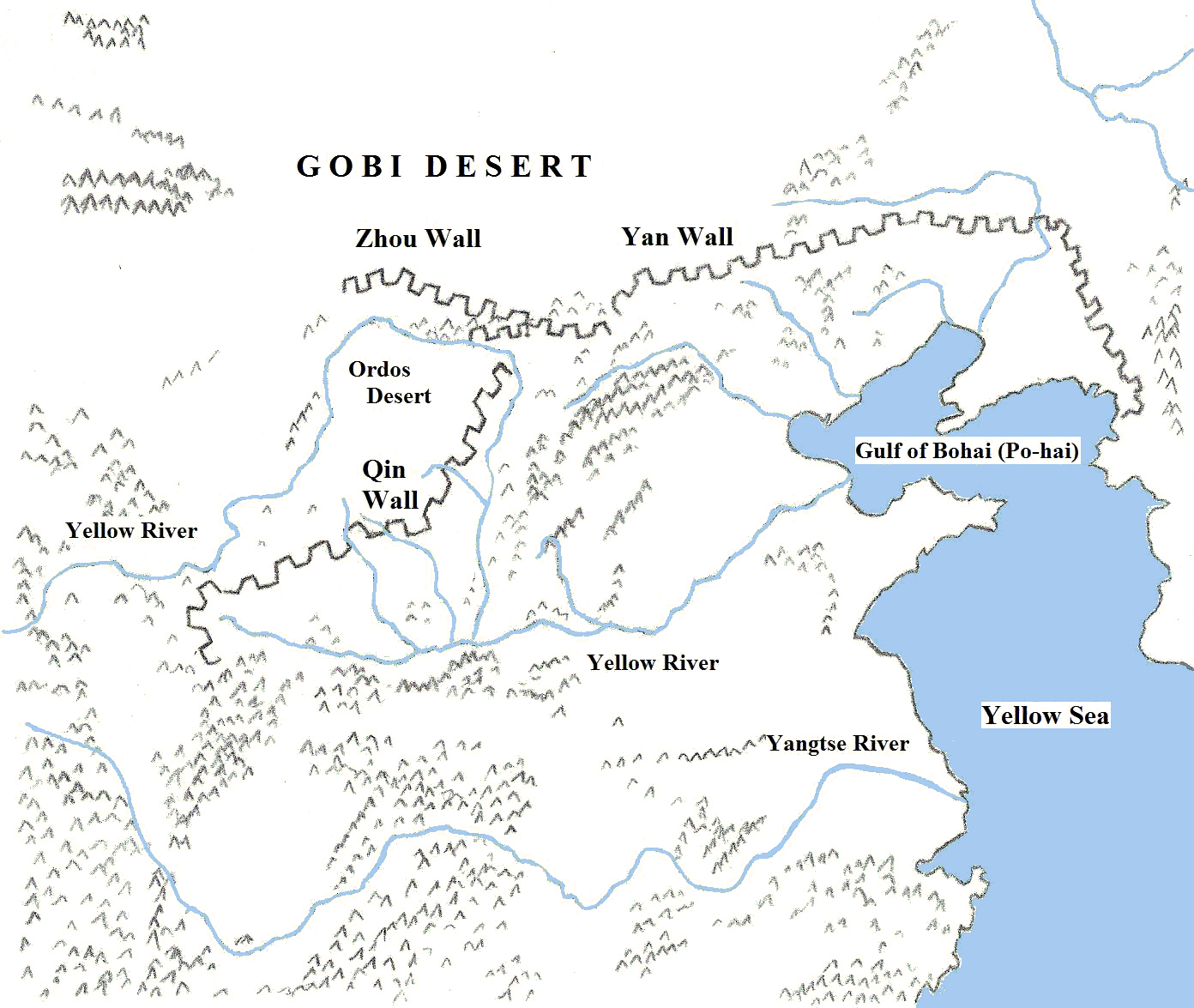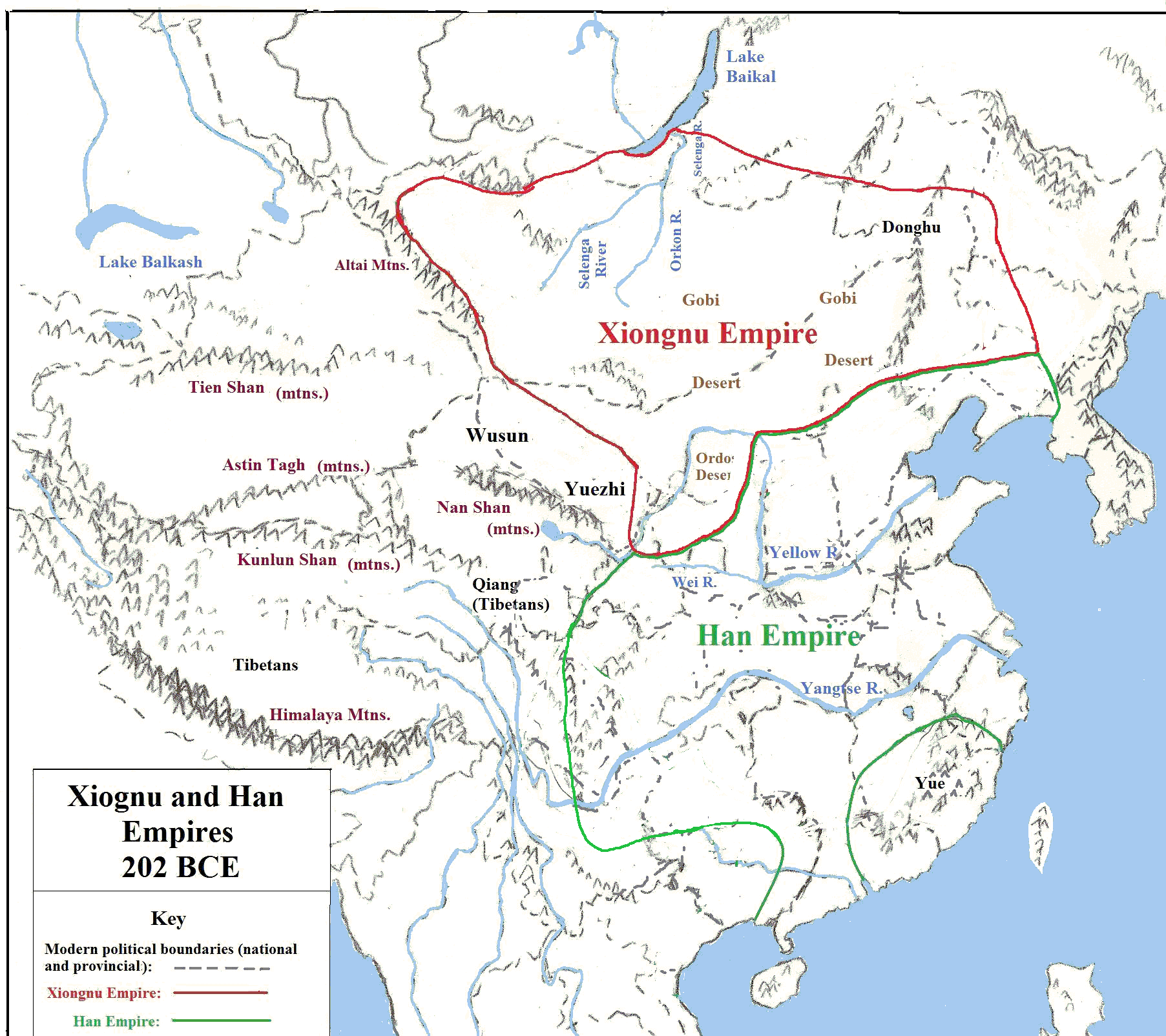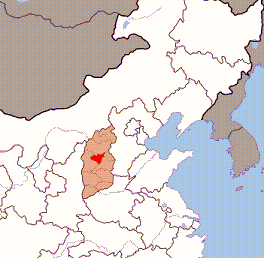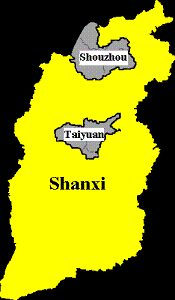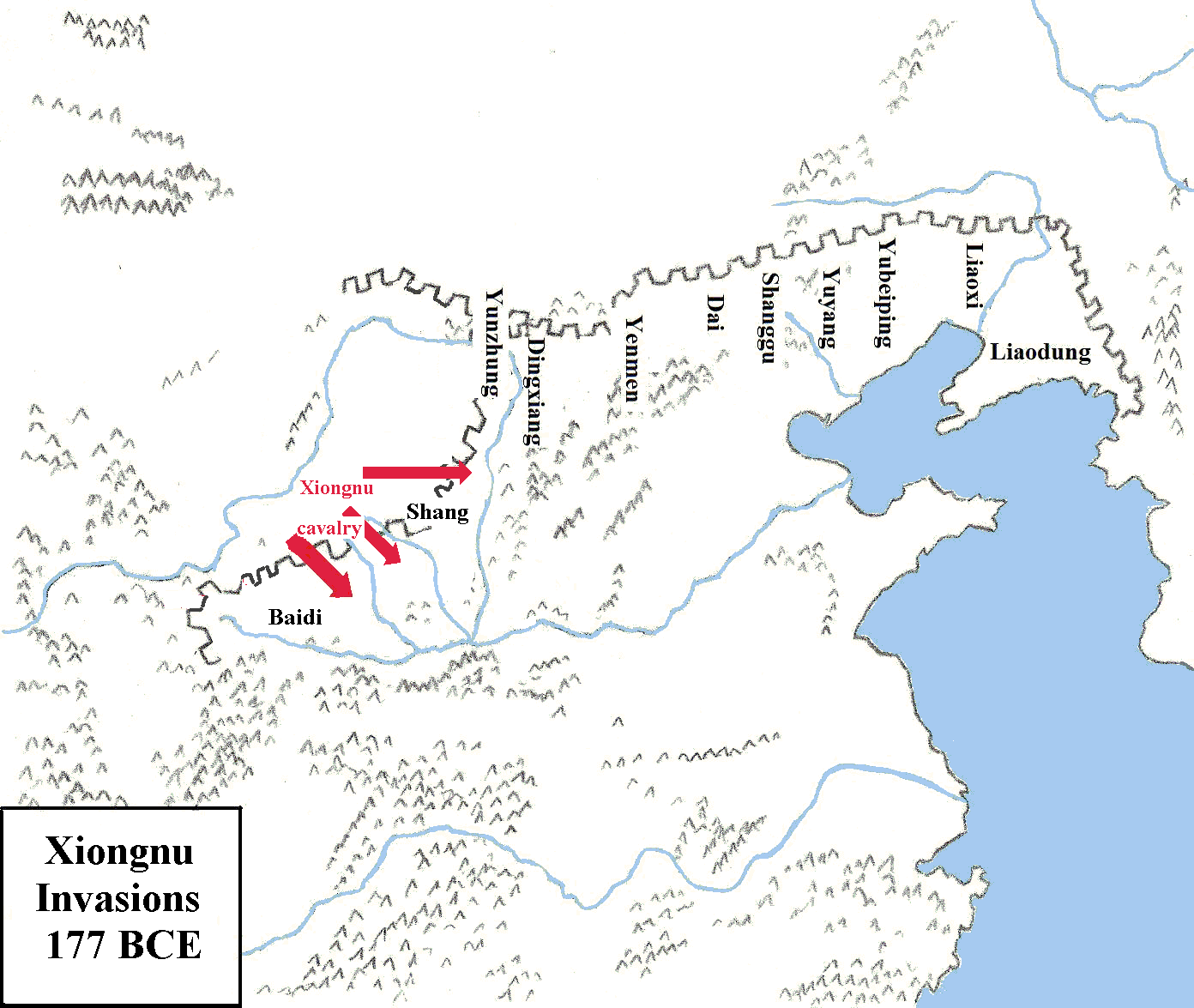| Time | Events | ||||||||||||||||||||||||
| By 350 BCE |
Much of what was first recorded for history concerning the Xiongnu is contained in the Shi Ji (Shih Chi) written by Sima Qian (Ssu-ma Ch'ien) (c.145-c.90 BCE) who was the Grand Historian (Taishi) of the Chinese imperial court from 110 BCE to 90 BCE, during the reign of Emperor Wu of the Han dynasty. (Sima Qian inherited his position from his father, Sima Tan, and the Shi Chi was either begun by Sima Tan or was at least a continuation of his work.) In his Shi ji 5: Basic Annals of Qin, in an entry that is essentially for the year 318 BCE, the Grand Historian Sima Quien (Ssu-ma Ch'ien) (c.145-c.90 BCE) makes his first non-legendary mention of the Xiongnu:7
Like the Mongols of the thirteenth century C.E., the Xiongnu were skilled at fighting with sword and bow while mounted on horses. Their tactics too were much the same as the Mongols. In his Shi Ji 110: The Account of the Xiongnu, Sima Qian writes:8
Like the Mongols, one special tactic of the Xiongnu was to have a weaker force of their own cavalry retreat from an advancing enemy army and so lead that army into ambush by a stronger, hidden force of their own. For an example of this, see the entry below for the year 200 BCE. In Shi Ji 110: The Account of the Xiongnu, Sima Qian writes:9
It may be fair to say that the Xiongnu's traditional ways of fighting were passed down through Mongolian history to the Mongols. But they were already shared at the time of the Xiongnu with the Yuezhi (Yueh-chih) and Wusun (Wu-sun). The ethnicity of the Xiongnu is unknown. It has been speculated that they were either Turkic, Mongolic, or related to some Siberian people such as the Yenisei10 or the Tunga.11 There is nearly a general consensus among scholars that both the Yuezhi and the Wusun were originally Indo-European.12 During the Period of the Warring States (475-220 BCE), some of the Quanrong (Chuan-rung) became absorbed into the Xiongnu but the main body of the Quanrong later posed a significant problem for the Western Han Dynasty (206 BCE-9 CE) and the Eastern Han Dynasty (25 CE-250 CE).13 |
||||||||||||||||||||||||
| 256 BCE | End of the Zhou Dynasty. The Zhou dynasty ended in 256 BCE when King Nan, the last effective king of Zhou, died and his sons did not proclaim the nominal titles of King of China. (Nobles of the Ji family proclaimed King Hui as King Nan's successor after their capital, Luoyang, fell to Qin forces in 256 BC. However Zhou resistance did not last long in the face of the Qin advance and so King Nan is widely considered to have been the last king of the Zhou dynasty.)1 | ||||||||||||||||||||||||
| 221 BCE | Beginning of the Imperial Qin (Ch'in) Dynasty. After the king of Qin by the personal name of Ying Zheng (Ying Chen) conquered all of the other Chinese states, he formally made himself the Emperor of China. He was given the formal name Qin Shi Huangdi ("First Most Sublime Ruler of the Qin")1 | ||||||||||||||||||||||||
| 220-209 BCE | The Reign of the Xiongnu Shanyü Touman. Touman, the earliest known Shonyü (supreme chieftain) of a Xiongnu (Hsiung-nu) confederacy, reigned from 220-209 BCE.1 He conducted raids into the Qin Empire from the Ordos region (the territory within the "Big Bend" of the Yellow River) until some time in 214-215 BCE when the Chinese general Meng Tian attacked and drove the barbarians out of the Ordos region. | ||||||||||||||||||||||||
| 215-214 BCE |
General Meng Tian of the Qin drove barbarian tribes out from the Ordos and he began construction of a "Great Wall."
The Grand Historian Sima Qian (Ssu-ma Ch'ien) (c.145-c.90 BCE) writes in Shi Ji 110: The Account of the Xiongnu:1
In Shi ji 6: The Basic Annals of the First Emperor of Qin, Sima Qian writes:2
The term Hu in the passage above from the Shi ji does not refer to a specific tribe or group of tribes. By the end of the fourth century BCE, Hu referred to non-Chinese people of the north in general, while Yueh referred to non-Chinese people of the south in general.3 Further on in Shi Ji 6, Sima Qian comes back to General Meng Tian's aggression against barbarians:4 There is yet a fourth passage by Sima Qian to consider. In Shi ji 88, Sima Qian writes:5
Nicolo Di Cosmo in his book Ancient China and Its Enemies: The Rise of Nomadic Power in East Asian History (c. 2002) states:8
John Man in his book The Great Wall (c. 2008) is of a different opinion. According to Man, it was not the Xiongnu that had to be chased from the Ordos. He writes:9
The weights of the arguments seem to be about equal on both sides of the issue. However, both Di Cosmo and man are in agreement that the pressure put on the Xiongnu by the First Emperor and his general Meng Tian gave the Xiongnu the incentive to attain greater unity, organization, and military strength under a single leader. Nicola Di Cosmo writes in his Ancient China and Its Enemies:10
In his book, China: A History (c. 2009), John Keay writes:
|
||||||||||||||||||||||||
| 210 BCE | The first Emperor of the Qin died. He was succeeded by his son Hu Hai Son. Qin Shi Huang died at the age of fifty. He had swallowed too many mercury pills that the court physicians had prepared to make him immortal. He did not leave a will. By tradition, his eldest son Fusu (Fu-su?) should have inherited the throne. But the Prime Minister Li Si (Li Szu) and the chief eunuch Zhao Gao (Chao Kao) forged a will saying that Fusu and General Meng Tian should die. They feared that, if Fusu became emperor, then they would lose power; and they feared and hated Meng Tian who was Fusu's favorite general. Believing the will to be authentic, Fusu and Meng Tian dutifully committed suicide. Qin Shi Huang's younger son Hu Hai Son became emperor that same year at the age of 21. Hu Hai Son's posthumous name is Qin Er Shi (Ch'in Erh Shih, "Second Generation Qin"). As emperor, Qin Er Shi became so dependent on the eunuch Zhao Gao for advice that he did whatever Zhao told him to do.1 | ||||||||||||||||||||||||
| 210-209 BCE |
Touman tried to have his son Modun killed; Touman's plot was foiled; Modun had his father killed and succeeded him as leader of the Xiongnu confederacy.1
In Shi ji 110: The Account of the Xiongnu, Sima Qian writes2:
|
||||||||||||||||||||||||
| 209 BCE | Rebellions against the second Qin emperor arose and fell. There were a number of rebellions against the rule of Qin Er Shi and his advisor Zhao Gao. They were all crushed due to Qin military superiority.1 | ||||||||||||||||||||||||
| 208 BCE | Descendents of royal families of former states rebel. The descendants of the royal families of the former Yan, Zhao (Chao), Qi (Ch'i) and Wei states rose in rebellion against the Qin Dynasty in the name of restoring their states. In Wu (in present-day Jiangsu province), General Xiang Liang (Hsiang Li-ang) started an uprising as well and installed Mi Xin (Mi Hsin) as King Huai II of Chu. General Liu Bang went to join Xiang Liang and served under the Chu state. After Xiang Liang was killed in action at the Battle of Dingtao (Ting-tao), King Huai II sent Xiang's nephew Xiang Yu (Hsiang Yu) and Song Yi (Sung Yi) to lead an army to attack the Qin forces and help Zhao. Liu Bang was granted the title of "Marquis of Wu'an" by King Huai II of Chu and put in charge of an army to attack Qin. The king promised that whoever managed to enter Guanzhong (Kwan-chung, heartland of Qin) first would be granted the title of "King of Guanzhong". 1 | ||||||||||||||||||||||||
| 208-202 BCE |
Next, according to Sima Qian:2
After digressing to discuss the structure of the Xiongnu government of leaders and some Xiongnu customs, Sima Qian returns to the topic of Modun's early conquests:3
Citing not only Shi Ji 110 but also Shih chih chu-yi 110 and Shih chih chu-yi 2319, Han Shu 94A, and Han Shu 3753, Di Cosmo writes:4
Christian writes:5
|
||||||||||||||||||||||||
| 207 BCE | Qin forces defeated by rebels; Qin emperor Qin Er Shi committed suicide; Ziyin succeeded him. Qin (Chi'n) military forces were severely defeated by general Xiang Yu in the Battle of Julu (Chulu). 200,000 Qin soldiers surrendered to Xiang Yu. He had them all buried alive. Soon afterwards, Qin Er Shi was forced by Zhao Gao to commit suicide. In December, Zha Gao made Ziyin (Chih Yin), a close relative of Qin Er Shi, the new emperor. Ziyin is posthumously known as Qin San Shi (Ch'in San Shih).1 | ||||||||||||||||||||||||
| Winter (Jan-Mar) 206 BCE | Qin Emperor surrendered to the Zhu rebels; Qin Dynasty ended; China was split into two kingdoms: Western Chu and Han. The new Qin emperor Ziyin murdered Zha Gao. When the Chu general Liu Bang penetrated Guanzhong and attacked the Qin capitol, Xiangyang,Emperor Ziyin surrendered to him. When Xiang Yu arrived at Hangu Pass, the eastern gateway to Guanzhong, he saw that the pass was occupied by Liu Bang's troops, a sign that Guanzhong was already under Liu Bang's control. Liu Bang's general Cao Wushang sent a messenger to see Xiang Yu, saying that Liu Bang would become King of Guanzhong in accordance with King Huai II's earlier promise, while Ziyin would be appointed as Liu's Chancellor. Xiang Yu was furious after hearing that. Xiang Yu invited Liu Bang to attend a banquet while secretly preparing to kill him during the feast. However, Xiang's uncle Xiang Bo managed to spoil the plan. At the feast, Liu Bang became aware of Xiang Yu's true intentions and escaped back to his camp. Liu Bang and his troops evacuated from Xianyang and retreated westwards later. Xiang Yu paid no attention to Liu Bang's presumptive title and led his troops into Xianyang. Xiang ordered the execution of ex-Emperor Ziying and his family, as well as the destruction of the Epang Palace by fire. Xiang Yu offered King Huai II the more honourable title of "Emperor Yi of Zhu." Xiang Yu proclaimed himself "Hegemon-King of Western Chu" and split the former Qin empire into Eighteen Kingdoms. The land of Guanzhong, rightfully Liu Bang's according to King Huai II's earlier promise, was granted by Xiang to three surrendered Qin generals instead. Liu Bang was relocated to Hanzhong (Han-chung) in the remote, Bashu region (in what is now Sechuan Province) and granted the title of "King of Han."1 | ||||||||||||||||||||||||
| 206 BCE (after winter) | Liu Bang returned to Guanzhong. While Xiang Yu was away suppressing the rebellion in Qi, Liu Bang led his troops to seize Guanzhong and several lands, including Xiang Yu's capital city of Pengcheng (present-day Xuzhou) at one point. The forces of Western Chu and Han then engaged in a power struggle for supremacy over China for about five years, known as the Chu-Han contention, with victories and defeats for both sides in various battles.1 | ||||||||||||||||||||||||
| 203 BCE | The war turned in favor of Liu Bang. Initially, Western Chu had an advantage over Han, but the tide turned in favour of the latter in 203 BC, after Xiang Yu and Liu Bang came to an armistice, known as the Treaty of Honggou, that divided China into east and west under their domains respectively. Soon afterwards, Liu Bang renounced the treaty and attacked Xiang Yu, taking Xiang by surprise and scoring a series of victories in the following battles.1 | ||||||||||||||||||||||||
| 202 BCE | Liu Bang totally defeated Xiang Lu and became the first emperor of the Western Han dynasty. Liu Bang's forces defeated Xiang Yu's at the Battle of Gaixia. Xiang Yu committed suicide and Western Chu surrendered. Liu Bang unified China. With the support of his subjects, he became the first emperor of the Western Han dynasty. He later became known as Emperor Gao (Kao) or Gaozu (Kao-tsu).1 | ||||||||||||||||||||||||
| 201 BCE |
|
||||||||||||||||||||||||
| 200 BCE | Emperor Liu Bang led an army against the Xiongnu; he was defeated and made tributary concessions to the Xiongnu. The Emperor Liu Bang personally led two hundred thousand Chinese troops to attack the Xiongnu and put a stop the rebellion of King Xin. Thirty percent of his soldiers lost their fingers from frost-bite during the march to reach the Xiong-nu forces in Shanxi province. When the emperor and his army made contact with the Xiong-nu, the number of Xiong-nu they first encountered seemed relatively small. The Xiongnu hastily retreated from the advancing Han. The Han gave pursuit with the emperor himself and his vanguard at the front of their formation. The emperor and his vanguard were well ahead of the rest of the Han forces when they reached the fortified frontier town of Bing Qeng (Ping-ch'eng, modern Pingluchen, about 150 kilometers west of Ta-t'ung) near Mount Baideng (Pai-teng). They entered the town. Suddenly, they found themselves surrounded by a great number of Xiongnu archers mounted on horses outside the walls of the town. The Xiongnu cavalry was swirling around the town in circles. The horses were of four different colors. Each color was for a different Xiongnu army. The Xiongnu retreat had been a ruse to entrap the emperor. The emperor and his vanguard remained surrounded in the town by the four Xiongnu armies for seven days without hope of rescue. Then one of the emperor's counselors named Zhen Bing (Chen Ping) managed to reach the wife of Modun. He boasted to her of the number and beauty of the emperor's concubines and hinted to her that they might well replace her if Modun advanced and captured the emperor's palace in Taiyuan. The empress used her influence on her husband. Modun made a deal with the emperor. The emperor and his men were allowed to leave the town in safety. In exchange, the emperor and his army returned peacefully to Taijuan while Modun and his four armies did not withdraw until they stripped the surrounding country of every head of livestock and all the pieces of property that their spare horses could carry.1 | ||||||||||||||||||||||||
| 199 BCE | Emperor Liu Bang was confronted by rebellious aristocrats of three northern principalities; he sought further appeasement with Modun. Xin, the ruler of the principality of Hann who had defected to Modun's side in the conflict with the Emperor Liu Bang, became a Xiongnu general. He and some other Chinese aristocrats of semi-autonomus principilaties continued to make attacks against the emperor regardless of the agreement that had been made between Motun and Liu Bang. One of the other Chinese aristocratics was Chen Xi who was the prime minister of Dai Principality and was a friend of Xin. Others were of the principalities of Yen-men and Yun-chung. The emperor came to realize that he must take great measures to appease Modun.1 | ||||||||||||||||||||||||
| 198 BCE |
The Chinese-Xiongnu "Peace-Through-Kinship" Treaty of 198 BCE Han Emperor Liu Bang made a long-lasting peace treaty with Modun. It was to apply to future sovereigns on both sides. The treaty was designed by Liu Ching, a counselor of Liu-Bang who had advised Liu Bang in 200 BCE, before Han army was launched into the expedition that resulted in the humiliating Han defeat at Mount Baideng, not to go against the Xiongnu.1 The Han acknowledged their military inferiority to the Xiongnu by agreeing:
In return, the Xiongnu agreed to not raid or invade the realms of the Han dynasty. Modun did marry a royal princess who was allegedly the daughter of the emperor. (The original annals of the Han Dynasty reveal that she was not in fact the eldest daughter of Liu Bang. The empress would not allow it.) The treaty actually offered much to both sides:2
Also, the counselor Liu Ching had a hidden agendas implicitly in the treaty:3
That was the plan, anyway. |
||||||||||||||||||||||||
| June 1, 195 BCE | The first Han Emperor, Liu Bang, died. He was succeeded by his son Liu Yang who became Emperor Hui of Han. Emperor Liu Bang (Liu Pang) died from a lingering illness. The illness began when he was recovering from a wound. The wound was from a stray arrow that had struck him while he was in a battle against the rebel Ying Bu (Ying Pu). He was posthumously given the name Emperor Gaozu (Kao Tsu) of Han. He was succeeded as emperor by his son the crown prince Liu Ying (b. 210 BCE) who became Emperor Hui of Han.1 But the new emperor was dominated by his mother, the empress dowager Lü Zhi (Lü Chih). She was the effective ruler of the Han Empire during his reign.2 | ||||||||||||||||||||||||
| 192 BCE | Modun sent an apparent marriage proposal to the ageing dowager empress Lu. She humbly rejected it. Trade with the Han Empire was becoming increasingly desired by the Xiongnu. Han resentment had been building up against the Xiongnu. With each treaty renewal, the amount of tribute paid by the Han Empire to the Xiongnu increased substantially. At the same time, Xiongnu there continued to be raids into the empire. They were on a lesser scale than they were before the treaty of 198 BCE, but they were just as frequent. They were usually made by Han renegades or tribal people that the shanyu could not well control, but they made the Han Chinese feel as if they weren't getting the benefits due to them in return for their tributes. The resentment peaked when, in 192 BCE, the shanyu Modun sent a message to the dowager empress Lu suggesting that, since they were both widowed and of the same age, they might do well living in each others company. The dowager empress felt so offended by the message that she wanted to prepare her Han army for war. But her more prudent counselors and ministers talked her out of going to war against the Xiongnu. Instead, she sent a reply to the shanyu saying that he would not be happy living with her since her teeth and hair were falling out and that she was not worthy of his lowering himself. She stated that her country had done nothing wrong and that she hoped that he would not do harm to it. In his book, A History of China (c. 2009)1, John Keays suggests that a more subtle interpretation of the Shanyu's original message regards the phrase "to exchange the things I have for the things that I do not have" as expressing a wish to do more commercial trade with the Han Empire. The Hans' hidden agenda of making the Xiongnu more dependent on Chinese produce was being realised. With the renewal of the "peace-through-kinship" treaty between the Han Empire and the Xiongnu, access to Han markets along the frontier became an increasingly significant part of the treaty. | ||||||||||||||||||||||||
| 188 BCE | Emperor Hui of Han died. He was succeeded by his son Liu Gong who became the Emperor Qianshao of Han. Emperor Hui of Han died of an unspecified illness. His mother the Empress Dowager Lu had him replaced by one of his sons, Liu Gong, who is posthumously known as Emperor Qianshao (Ch'ian Shao) of Han. Emperor Hui had not had any sons by his wife, Empress Zhang Yan (Chang Yan). The mothers of all his sons were concubines. But Empress Zhang Yan had adopted Liu Gong. At the time when he became emperor, Liu Bang believed that the Empress Zhang Yan was his true mother by birth. And he was not yet old enough to take on the full duties and responsibilities of an emperor. His grandmother Lü, now the Grand Empress Dowager, continued to be the effective ruler of the Han Empire.1 | ||||||||||||||||||||||||
| 184 BCE | Emperor Qianshao of Han died. He was succeeded by his half-brother Liu Hong who became Emperor Houshao of Han. Some time before the Emperor Quianshao, common name Liu Gong, died, he learned that his real mother was not Empress Zhang Yan, but instead was a concubine of his father. He also found out that his grandmother, the Grand Empress Dowager Lü, had instigated the Empress Zhang Yan to kill hs real mother. He was heard to remark that, when he grew up, Lü would pay for this. Lü found out about what he had learned and what he had said about it. She had him secretly imprisoned and had it publicly announced that he was ill and could not receive anyone. After a time, she declared that he was insane and she had him deposed. Finally, she had him killed and had his younger half-brother, Liu Hong succeed him. Liu Hong is posthumously known as the Emperor Houshao.1 | ||||||||||||||||||||||||
| 180 BCE | The Grand Empress Dowager Lü died; Emperor Houshao was deposed and replaced by Prince Liu Heng of Dai who became Emperor Wen of Han (Personal name: Heng). The Grand Empress Dowager Lü died of an illness. Soon afterwards, the high ministers of the Han government joined together in a coup. They exterminated the Lü clan, the powerful family of the former grand empress dowager. They deposed Emperor Houshao and made his uncle, Prince Liu Heng of Dai, the new emperor. By the end of the same year, Emperor Houshao was executed. Prince Liu Heng of Dai is posthumously known as Emperor Wen of Han.1 | ||||||||||||||||||||||||
| 177 BCE, Fifth-month |
|
||||||||||||||||||||||||
| 175 BCE |
The Xiongnu defeated the Yuezhi and dominated all of what is now the modern province of Xinjiang (Sinkiang). Modun sent his son Laoshang (proper name: Jizhu1) as "Wise King of the Right," i.e., as commander of the Xiongnu (Hsiung-nu) forces and governor of the Xiongnu people in the western side of the Xiongnu empire, to defeat the Yuezhi (Yeüh-chih). This task was accomplished. The leader of the Yuezhi was killed and his skull was made into a drinking cup.2 In a letter to the Han emperor Wen, Modun stated:
|
||||||||||||||||||||||||
| 174 BCE | Modun, the shanyu of the Xiongnu, died; his son Lao Shang (proper name: Jizhu) succeeded him as shanyu.1 | ||||||||||||||||||||||||
| 173 BCE | The Yuezhi overran the Wusun. In 173 BCE,1 the Yuezhi attacked and overran the Wusun. Nandoumi, the kunmo (supreme chieftain) of the Wusun, was killed. Some time later, his infant son Liejiaomi was left in the wild. Liejiaomi was eventually found by the Xiongnu. According to a legend recorded in the Hanshu (an ancient Chinese history text that is sequel to Sima Quien's Shiji), Liejiaomi was suckled by a she-wolf and fed meat by ravens while he was in the wild. Liejiaomi was eventually found by the Xiongnu. The Xiongnu's shanyu Jizhu (a.k.a. Lao Shang) adopted Liejiaomi and raised him. When Liejiaomi came of age, Jizhu saw to it that he was made the kunmo of the Xiongnu like his father had been. Jizhu also made Liejiaomi the commander of the far western region of the Xiongnu Empire as a vassal of the Xiongnu.2 | ||||||||||||||||||||||||
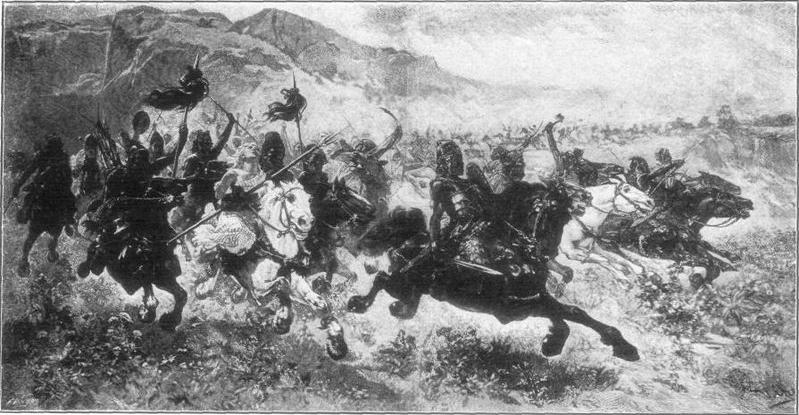
|
Empires, Barbarians, & Barbarian Empires |
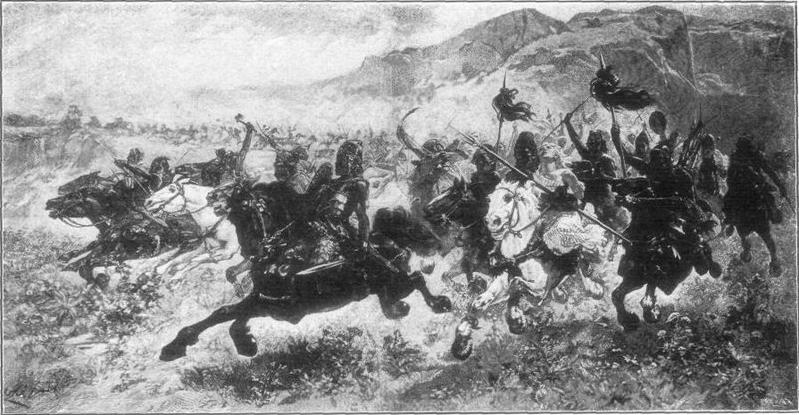
|
|
The Xiongnu 350 B.C.E.-460 C.E. |
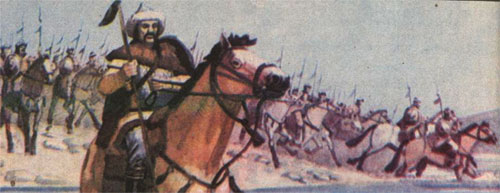
|
FOOTNOTES TO MAIN TEXT
By 350 BCE: Recognition of Xiongnu
1Christian, D., A History of Russia, Central Asia and Mongolia, Vol. I (Malden, Massachusetts: Blackwell Publishers, 1998), pp. 128, 184; Legg, S., The Barbarians of Asia (New York: Dorset Press, 1970.), pp. 75-76.
2Christian, op. cit., pp. 128, 184; ElanguageSchool.net--Xiongnu. According to both of these sources, the Ordu region was the original base of the Xiongnu.
3Legg, op. cit., p. 75. Legg considers Mongolia to have been the prime domain of the Xiongnu.
4Christian, op. cit., pp. 128, 184; Wikipedia--"Donghue people"; Wikipedia--"Xiongnu".
5Christian, op. cit., pp. 128, 184; Grousset, op. cit., pp. 27-28; Mongolia: A Country Study--"Xiongnu and Yuehzhi"; "The Yuezhi Migration and Sogdia" by Craig Benjamin; EconomicExpert.com--"Yuezhi".
6Christian, op. cit., pp. 128, 184; Grousset, op. cit., p. 29; Wikipedia--"Wusun"; EconomicExpert.Com--"Wusun"; All Experts-Encyclopedia--"Wusun"; MapsOf.net--"Migration route of Wusun in Western Han Dynasty".
7Sima Qian and Watson, Burton (tr.), Records of the Grand Historian: Qin Dynasty (Hong Kong & New York: Renditions-Columbia University Press, 1993), p. 26. I leave out much of the middle of the paragraph quoted, as I indicate in the quotation with "..."; the clarifications placed in between lower-case brackets ("[ ]") are entirely my own insertions.
8Sima Qian and Watson, Burton (tr.), Records of the Grand Historian: Han Dynasty II Revised Edition (Hong Kong & New York: Renditions-Columbia University Press, 1993), p. 129.
9Sima Qian and Watson, Burton (tr.), Records of the Grand Historian: Han Dynasty II Revised Edition (Hong Kong & New York: Renditions-Columbia University Press, 1993), p. 137.
11Legg, op. cit., p. 77.
12Christian, op. cit., p. 184; Legg, op. cit., p.76; Grousset, op. cit., p. 28 (in regard to the Yuezhi only--on p. 29, Grousset considers it plausible that the Wusun originally spoke an Indo-European language, but does not endorse the notion as firm fact.); EconomicExpert.com--"Yuezhi";Wikipedia--"Yuezhi". (In Wikipedia--"Wusun" there are some reservations given about accepting the notion that the Wusun were originally Indo-European.)
256 BCE: End of the Zhou Dynasty
221 BCE: Beginning of the Imperial Qin (Ch'in) Dynasty
1The Anchor Atlas of World History, Volume 1: From the Stone Age to the Eve of the French Revolution, (New York: Anchor Books/Doubleday, 1974), p. 41; Wikipedia--"Qin Dynasty"; Wikipedia--"Qin Shi Huang".
220-209 BCE: The Reign of Xiongnu Ruler Touman (Toumen).
1AllEmpires.com--"The Xiongnu Empire" by Ishan
215-214 BCE: General Meng Tian of the Qin drove barbarian tribes out from the Ordos, and he began construction of a "Great Wall".1The main text of the translation given here is from Sima Qian and Watson, Burton (tr.), Records of the Grand Historian: Han Dynasty II Revised Edition (Hong Kong & New York: Renditions-Columbia University Press, 1993), pp. 133-34. The substitute words in lower-case brackets ("[ ]") are from the translation in Di Cosmo, Nicola Ancient China and Its Enemies: The Rise of Nomadic Power in East Asian History (Cambridge, U.K.: Cambridge University Press, 2002), p. 174.
2Sima Qian and Watson, Burton (tr.),Records of the Grand Historian: Qin Dynasty (Hong Kong & New York: Renditions-Columbia University Press, 1993), pp. 52-53.
3 Di Cosmo, Nicola Ancient China and Its Enemies: The Rise of Nomadic Power in East Asian History (Cambridge, U.K.: Cambridge University Press, 2002), p. 130; Di Cosmo quotes a passage in an anonymous letter sent to the King of Yen, and recorded in the Chan-kuo ts'e; he argues that, in the letter, "...the name 'Yueh' is used as a generic term for the non-Chinese peoples of the south, while 'Hu' describes non-Chinese peoples of the north. We can thus reasonably say that, by the end of the fourth century B.C., the term 'Hu' applied to various northern ethnic groups (tribes, groups of tribes, and even states) speaking different languages and generally found living scattered across a wide territory."
4Sima Qian and Watson (trans.), Records of the Grand Historian: Qin Dynasty (Hong Kong & New York: Renditions-Columbia University Press, 1993), p. 79.
5Ibid., pp. 207-08.
6www.ChinaKnowledge.Org --"Chinese History - Non-Chinese peoples and neighboring states: Rong ".
7www.ChinaKnowledge.org - History--"Non-Chinese peoples and neighboring states: Di".
8Di Cosmo, op. cit., p. 175.
9Man, John. The Great Wall (Philadelphia: De Capo Press, 2008), p. 52.
10Di Cosmo, op. cit., pp. 178-79.
11Keay, John, China: A History (New York: Basic Books, 2009), p. 131.
210 BCE: The Qin Emperor died.
210-209 BCE: Touman tried to have his first son Modun killed; Touman's plot is foiled; Modun had his father killed and succeeded him as Shanyu of the Xiongnu confederacy.
1Christian, op. cit., p. 209 gives 209 BCE as the year that "Mo-tun" (Maodun) assumed the title of "shan-yu" (shanyu). Di Cosmo, op. cit., p. 186, also gives 209 BCE as the year for this. I allow for one year between the event of Touman giving Modun as a hostage to the Yeuzhi and the event of Modun taking the title of shanyu.
2 Sima Qian and Watson, Burton (tr.), Records of the Grand Historian: Han Dynasty II Revised Edition (Hong Kong & New York: Renditions-Columbia University Press, 1993), p. 134.
209 BCE: Rebellions against the second Qin emperor arose and fell.
208 BCE: Descendents of royal families of former states rebelled.
208-202 BCE: Modun created a Xiongnu Empire—he expanded Xiongnu territory in all directions.
1Sima Qian and Watson, Burton (tr.), Records of the Grand Historian: Han Dynasty II Revised Edition (Hong Kong & New York: Renditions-Columbia University Press, 1993), p. 135.
2Ibid., pp. 135-36.
3Ibid., p. 138.
4Di Cosmo, op. cit., p. 188.
5Christian, op. cit., pp. 185-86.
207 BCE: Qin forces defeated by rebels; Qin emperor committed suicide. Ziyin succeeded him.
1Wikipedia--"Qin Er Shi"; Wikipedia--"Battle of Julu"; Wikipedia--"Xiang Yu"; Wikipedia--"Ziying".
206 BCE: Qin Emperor surrendered to the Zhu rebels; end of Qin Dynasty; China was split into two kingdoms: Western Chu and Han.
1Wikipedia--"Ziying"; Wikipedia--"Xiang Yu"; Wikipedia--"Emperor Gaozu of Han"; "Liu Bang and Xiang Yu" by Chung Yoon-Ngan.
206 BCE: Liu Bang returned to Guanzhong.
203 BCE: The war turned in favor of Liu Bang.
202 BCE: Liu Bang totally defeated Xiang Lu and became the first emperor of the Western Han dynasty.
201 BCE: The Han marquise King Xin in Mayi surrendered to the Xiongnu and joined them after they attacked Mayi.
1 Sima Qian and Watson, Burton, Records of the Grand Historian [Shi ji]: Han Dynasty II, Revised Edition, p. 138 [Shi ji 110]; Di Cosmo, op. cit., p. 190—Di Cosmo cites the Chung-kuo li-shih ti-t'u chi and gives details not found in Shi ji 110; www.ImperialChina.org -- "The Huns, Part I" by Ah Xiang, first paragraph under the sub-heading "Huns Attacking Han Chinese."
200 BCE: Emperor Liu Bang led an army against the Xiongnu; he was defeated and made tributary concessions to there Xiongnu.
1Most of the details are from Legg, op. cit., p. 92; but these have been combined here with some details from: Sima Qian and Watson, Burton, Records of the Grand Historian [Shi ji]: Han Dynasty II, Revised Edition, pp. 138-39 [Shi ji 110]; Di Cosmo, op. cit., pp. 190, 192; Christian, op. cit., p. 186; and www.ImperialChina.org -- "The Huns, Part I" by Ah Xiang, first paragraph under the sub-heading "Huns Attacking Han Chinese."
199 BCE: Emperor Liu Bang was confronted by rebellious aristocratics of three northern principalities; he sought further appeasement with Modun.
1Di Cosmo, op. cit., p. 192; www.ImperialChina.org -- "The Huns, Part I" by Ah Xiang, first paragraph under the sub-heading "Huns Attacking Han Chinese."
198 BCE: The Chinese-Xiongnu Treaty of 198 BCE
1Di Cosmo, op. cit., p. 193.
2Christian, op. cit., p. 187; Di Cosmo, op. cit., pp. 193-94.
3 Di Cosmo, op. cit., p. 194.
195 BCE: The first Han Emperor, Liu Bang, died. He was succeeded by his son Liu Yang.
1Wikipedia--"Emperor Gaozu of Han".
2Wikipedia--"Emperor Hui of Han"; Wikipedia--"Empress Dowager Lü".
192 BCE: Modun sent an apparent marriage proposal to the ageing dowager empress Lu. She humbly rejected it. Trade with the Han Empire was becoming increasingly desired by the Xiongnu.
1Keay, op. cit., pp. 133-34.
188 BCE: Emperor Hui of Han died. He was succeeded by his son Liu Gong who became the Emperor Qianshao of Han.
1Wikipedia--"Emperor Hui of Han"; Wikipedia--"Liu Gong"; Wikipedia--"Empress Dowager Lü".
184 BCE: Emperor Qianshao of Han died. He was succeeded by his half-brother Liu Hong who became Emperor Houshao of Han.
1Wikipedia--"Liu Gong"; Wikipedia--"Empress Dowager Lü".
180 BCE: The Grand Empress Dowager Lü died; Emperor Houshao was deposed and replaced by Prince Liu Heng of Dai who became Emperor Wen of Han.
1Wikipedia--"Emperor Houshao of Han"; Wikipedia--"Empress Dowager Lü".
177 BCE, Fifth month: The Xiongnu entered undisturbed the Baidi and Shang commanderies. They left after a very large army of Han Chinese cavalry arrived nearby.
1 Sima Qian and Watson, Burton, Records of the Grand Historian [Shi ji]: Han Dynasty II, Revised Edition, p. 140 [Shi ji 110]; Di Cosmo, op. cit., p. 204.
175 BCE: The Xiongnu defeated the Yuezhi and dominated all of what is now the modern province of Xinjiang (Sinkiang). The Yuezhi began a series of migrations westwards.
1"The Yuezhi Migration and Sogdia" by Craig Benjamin; Wikipedia--"Laoshang Chanyu.
4Christian, op. cit., p. 187.
174 BCE: Modun, the shanyu of the Xiongnu, died; his son Lao Shang succeeded him as shanyu.
1Christian, op. cit., p. 187; Wikipedia--"Laoshang Chanyu.
173 BCE: The Yuezhi overran the Wusun.
1Transoxiana.org--"The Yuezhi Migration and Sogdia" by Craig Benjamin. Benjamin cites the Han Shu 61 4B.
2Wikipedia--"Wusun" (The opening paragraph has an error, making a statement about the Wusun that applies to the Yuezhi only--it was the Yuezhi, not the Wusun, who migrated to the Ili Valley to get away from the Xiongnu. But the later section under the heading "History" has it straight.)
BIBLIOGRAPHY
Books
Christian, David. A History of Russia, Central Asia, and Mongolia, Vol. I: Inner Eurasia from Prehistory to the Mongol Empire. Malden, Massachusetts: Blackwell Publishers, 1998. 495 pages. Paperback, ISBN-10: 0-631-208143.
Di Cosmo, Nicola. Ancient China and Its Enemies: The Rise of Nomadic Power in East Asian History. Cambridge, U.K.: Cambridge University Press, 2002. 369 pages. Paperback, ISBN-13: 978-0-54382-8; Hardback, ISBN-13: 978-0521-77064-4.
Gernet, Jaques. A History of Chinese Civilization. Cambridge, U.K.: Cambridge University Press, 1985. Paperback, ISBN-10: 0-521-31647-2.
Grousset, Rene. The Empire of the Steppes: A History of Central Asia. New Bruswick, New Jersey: Rutgers University Press, 1970. Hardback, SBN: 8135-0627-1.
Keay, John. China: A History. New York: Basic Books, 2009. 578 pages. Hardback, ISBN-13: 978-0-465-01580-1.
Legg, Stuart. The Barbarians of Asia: The Peoples of the Steppes from 1600 B.C.. New York: Dorset Press, 1970. 350 pages. Hardback, ISBN-10: 0-88029-534.
Lovell, Julia. The Great Wall: China Against the World 1000 BC—AD 2000. London: Atlantic Books, 2006. 428 pages. Hardback, ISBN-10: 1-84354-2129.
Man, John. The Great Wall. Philadelphia: Da Capo Press, 2008. 335 pages. Paperback, ISBN-13: 978-0-306-81767-0.
Sima Qian and Watson, Burton (tr.), Records of the Grand Historian: Han Dynasty I (Revised Edition). Hong Kong & New York: Renditions-Columbia University Press, 1993. 513 pages (including preface). Paperback, ISBN-10: 0-231-08165-0.
Sima Qian and Watson, Burton (tr.), Records of the Grand Historian: Qin Dynasty: Han Dynasty II (Revised Edition). Hong Kong & New York: Renditions-Columbia University Press, 1993. 523 pages (including preface). Paperback, ISBN-10: 0-231-08167-7.
Sima Qian and Watson, Burton (tr.), Records of the Grand Historian: Qin Dynasty. Hong Kong & New York: Renditions-Columbia University Press, 1993. 263 pages (including preface). Paperback, ISBN-10: 0-231-08169-3.
On the Web
ChinaKnowlege.org/"History--Foreign peoples in and around China" --a table of historical barbarian peoples/tribes with links to specific pages about each, respectively!
1Silk-Road.com--"The Yuezhi Migration and Sogdia" by Craig Benjamin
"The Division and Destruction of the Xiongnu Confederacy" by Rafe de Crespigny
"Cultures and Ethnic Groups West of China in the Second and First Millennia B.C." by Jettmar Karl
Silk-Road.com--"The Barbarian Invaders" by John Masson Smith, Jr.
"The Division and Destruction of the Xiongnu Confederacy" by Rafe de Crespigny"
"Cultures and Ethnic Groups West of China in the Second and First Millennia B.C." by Jettmar Karl
Transoxiana.org--"The Yuezhi Migration and Sogdia" by Craig Benjamin
MapsOf.net--"Migration route of Wusun in Western Han Dynasty"
Wikipedia--"Chanyu" (Includes a table listing all the Shanyus (Chanyus) of the Xiongnu since Touman and the years of their reigns.)
San Jose State University/Prof. Thayer Watkins--"The Warring States of Ancient China"
"Homepage: A Visual Sourcebook of Chinese Civilization" by Patricia Buckley Ebrey
A Visual Sourcebook of Chinese Civilization--"Timeline and Maps"
